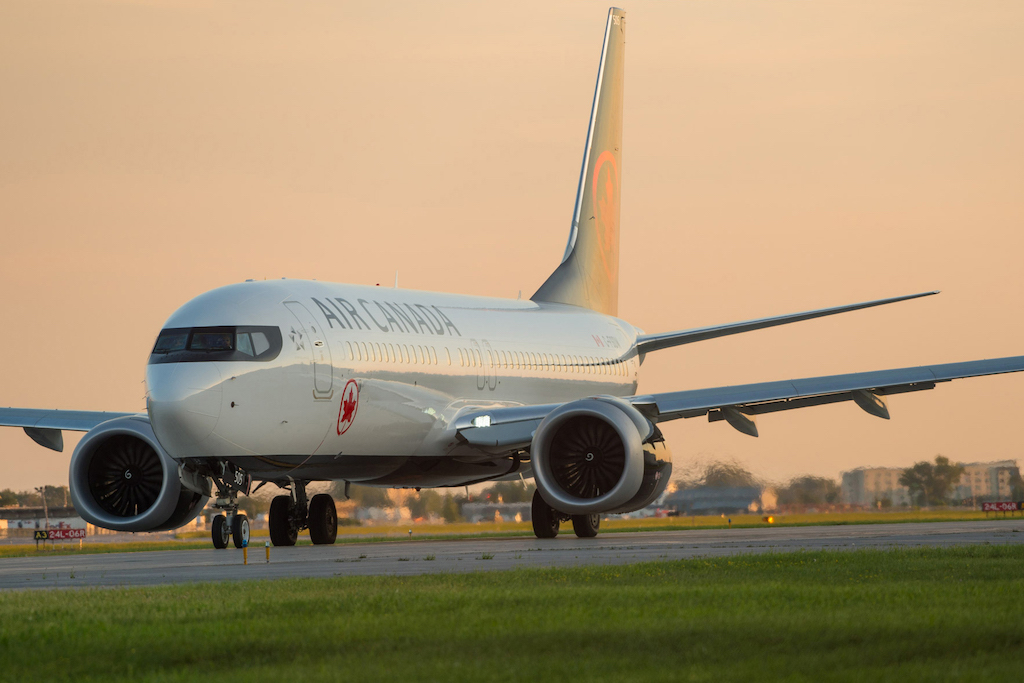Air Canada Pares Loss Thanks to Premium Economy, Cargo

Photo Credit: Air Canada / Courtesy of Air Canada
Business travel may still be in the doldrums, but Air Canada has found a way to fill the seats in the front of its airplanes: Premium leisure. Like many of its peers around the world, the carrier is pivoting to take advantage of this emerging market until and possibly after road warriors return.
The return of those road warriors is anyone's guess. Air Canada admits that the Canadian recovery lags the U.S., but its executives still are optimistic that business travel will resume next year as more companies in the country recall workers to their offices. The recovery will be led by small- and medium-size enterprises, Air Canada Commercial Chief Lucie Guillemette predicted, which is in line with what her peers in the U.S. have said as the recovery gathers steam.
In the meantime, Air Canada is filling its premium and premium-economy cabins with leisure travelers. This trend emerged quickly after Canada reopened travel during the third quarter after more than a year of all but sealing itself off from the world. This trend has been pronounced on Air Canada's transatlantic, India, and warm-weather — or "sun" — routes, Guillemette said during the company's third-quarter earnings call on Tuesday. "In the past, we would not have gone out and chased it," she said of premium-leisure traffic. "Now, we are doing everything we can to go out and capture it." Premium cabin revenues are recovering much faster than economy-class tickets, she added.
This is a new market for Air Canada, and one for which it has little history or data to guide it. Because of that, executives were unable to predict the resilience of premium-leisure demand as the recovery accelerates. What little information it did have has helped guide the carrier on rolling out new products and strategies to capitalize on the demand, Guillemette said. "There will be an opportunity for premium products for leisure travelers," she said. "We have to test some of these models to see what sticks."
Another new area of strength for Air Canada is cargo. The carrier has already earned C$1 billion ($806 million) this year from cargo, a record in the carrier's history. During the quarter, cargo generated C$366 million, or 107 percent more than it did in 2019. Air Canada will take delivery of eight more converted Boeing 767 freighters this year.
"The last few months have shown cargo’s value in diversifying our revenue, but demand for our services is expected to continue due to persistent demand and continuing bottlenecks in other modes,” CEO Michael Rousseau said.
During the pandemic, Air Canada converted 11 Boeing 777s and Airbus A330s into preighters. The carrier has no plans to re-convert these aircraft back to passenger operations soon, but it expects to need to do so from the first quarter of next year as travel demand begins to rise. But some of this lost cargo capacity will be replaced by belly-hold space on the new international routes Air Canada is launching, Guillemette said. "We are in good shape."
When passenger demand will return in force is an open question, of course. Air Canada is seeing demand rise for U.S., transatlantic, and sun destinations, but the Pacific network lags, thanks to ongoing travel restrictions in most of the Asia-Pacific region. Both transborder and international routes got a boost when Canada loosened quarantine requirements for vaccinated travelers in the third quarter. India flights — now up to 10-times weekly from Toronto and thrice weekly from Montreal — are performing well, due to strong visiting friends and relatives demand. Rousseau believes a full recovery could come as soon as the end of 2023. "There is no textbook for this kind of recovery, or any history," he said.
But the booking curve remains short, Guillemette said. Bookings are coming in — even for international travel — within 60 days. "This is not for the faint of heart," she said. But, she added, the volume of bookings now for first-quarter travel is on pace with where it was in 2019. "Load factors may not be at 2019 levels, but booking velocity is the same."
Rousseau added that although the company is encouraged by Canada's loosening of restrictions, more could be done. The country still requires PCR tests before arrival in Canada. This step is unnecessary, given Canada's vaccine requirement for inbound travel. "We don't believe it's necessary from a safety perspective," Rousseau said. "It would certainly help demand [to drop the testing requirement, but we just don't know what that number is."
Air Canada has recalled more than 10,000 of its furloughed employees so far this year and expects to complete recalling workers by years' end. The carrier also is hiring for new positions and growth. So far, Air Canada has not seen the labor challengers that other airlines, particularly in the U.S., have experienced.
In the quarter, Air Canada reversed its decision on two of the 12 Airbus A220s that it had said it would cancel. These aircraft are expected to join the fleet in 2024. It is moving up the delivery of four Boeing 737 Max aircraft to the fourth quarter, and will take an additional nine in the first quarter, bringing its total fleet of the type up to 40 aircraft.
The carrier plans to operate 135 percent more capacity in the fourth quarter than it did last year, but this will be 47 percent down from 2019.
Air Canada reported an adjusted pre-tax loss of C$649 million, down from C$1.1 billion last year. Revenues rose to C$2.1 billion, compared with C$757 million last year. Air Canada announced it will no longer provide daily cash burn guidance.
